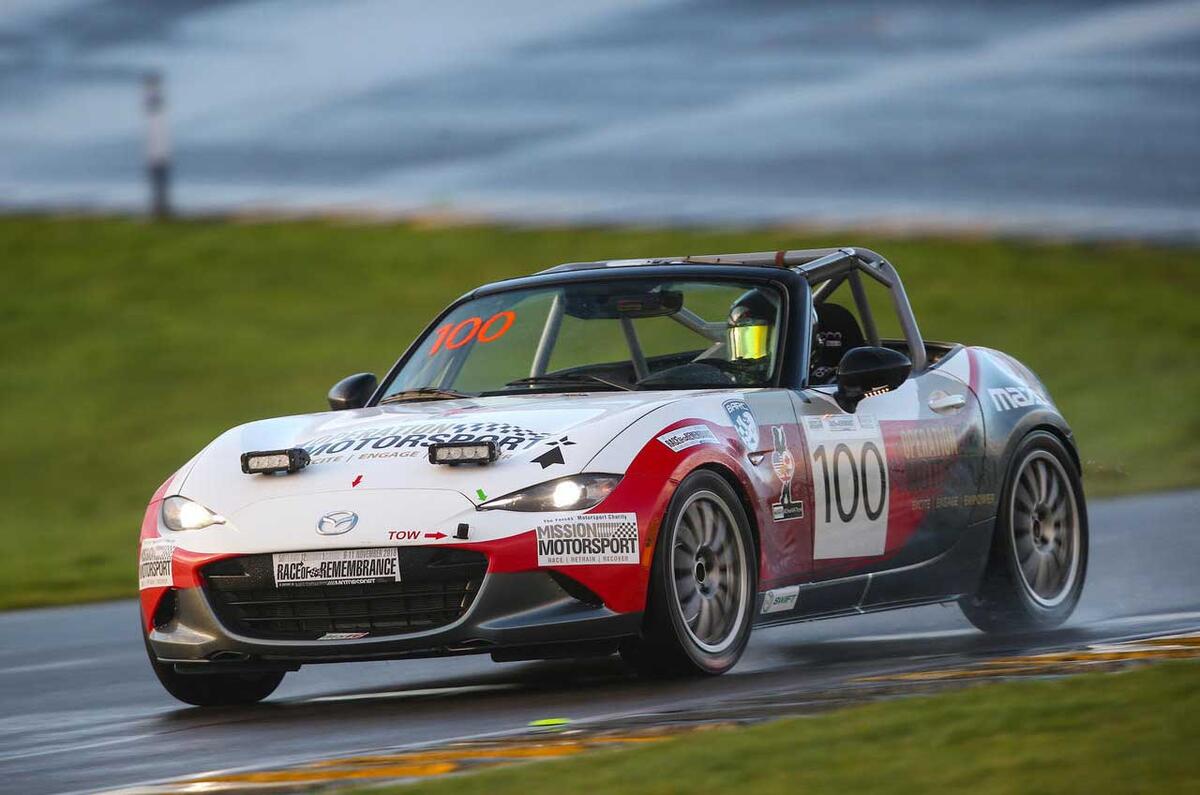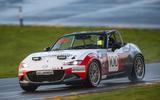If you want to get a real perspective on what is important in life, could I commend a trip to Anglesey next November? Of course you may already have an absolute understanding of what is trivial and what really bloody matters but, if you don’t, a weekend, a day or even an hour at the annual Race of Remembrance should do the trick nicely. It certainly did for me.
For those who don’t know, it’s a 12-hour race held over the Remembrance Sunday weekend, run by Forces charity Mission Motorsport. MM’s mantra is ‘race, retrain, recover’ and in pursuit of that objective it has already helped 1300 beneficiaries, providing placements for over 200 and full-time jobs for 100 more. Many of these beneficiaries are among the most injured people ever to be evacuated from a war zone, often having come into all-too-close contact with a hateful IED (improvised explosive device). Among their number I could count all three of the drivers with whom I shared a Mazda MX-5 Global Cup racing car for the weekend, or at least until, through no fault of Mazda or its drivers, it broke on us.
There will be a full article about them and their extraordinary stories in next week’s Autocar magazine, but one, Andy Jones, was a former member of the elite Parachute Regiment who ended up living out of bin bags; the second, Paul Vice, was a Marine Commando with a Military Cross to his name even before he became the most injured person known to have survived Afghanistan; and the third, Liam Dwyer, was a US Marine so badly hurt that to date he has gone under the surgeon’s knife over 50 times. They are different people from different spheres of the military, but all have one thing in common, save being blown up by IEDs: all will tell you that racing has helped them stay alive.
And when you hang out with them, get to know them, find yourself inexplicably accepted by them and hear their stories, you realise that however grotesque and extensive are the injuries you can see, it is those you cannot that plague them far more. Racing may not be a treatment you can get on a prescription, but you won’t be on the island for long to see that it works, and not just for the drivers.
For my team-mates, it does more than get the adrenaline pumping, it appeals to their competitive spirit, gives them something to focus on and, even if only temporarily, gives them vital respite from all the other stuff going on in their heads. But for their pit crews, many suffering just as much, to spend several days not just with people who mean well but really do understand what they’ve been through is vital. But there is so much more than that: to see these beneficiaries turn from a disparate bunch of veterans usually unknown to each other into a well-drilled team capable of running, servicing and refuelling a car in the thick of an endurance race held in filthy weather and quite a lot in the dark is a wondrous thing to behold.











Join the debate
Add your comment
Highlight of the season
Wonderful event, this was my third year travelling to Anglesey with a group of friends to marshal at the Race of Remembrance and we're already making plans for next year. One thing Andrew didn;t mention is that the race is halted on Sunday morning for a Remebrance service in the pitlane. It's just one of the things that makes this a very,very special event.